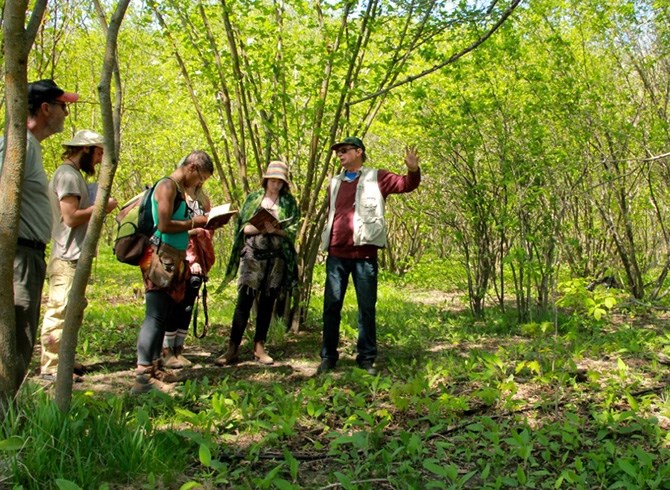
FILE PHOTO - A group under an Okanagan canopy of Filbert trees.
Image Credit: photo contributed
July 04, 2022 - 6:01 AM
With rising global temperature a University of British Columbia researcher has provided some suggestions regarding Kelowna’s plans to combat urban heat islands.
UBC urban ecologist Melissa McHale has not specifically studied the Okanagan but says there are things other cities are doing that Kelowna could utilize.
“You want to mitigate the impacts of development and urban heat islands and climate change but you also have major limitations in terms of water and other resources,” she said.
Urban heat islands occur when cities replace natural landscapes with asphalt and concrete that absorb and retain heat, increasing temperatures in certain areas.
A University of Waterloo study suggests heat waves could last up to 11 days in Kelowna, Penticton, Vernon and Kamloops in the near future. The average maximum temperature for the year in Kelowna could reach 40.2 Celsius by 2051, according to the study.
When the 2021 summer heat dome hit B.C. with record temperatures, 57 people died in the Thompson-Okanagan between June 25 and July 1.
“I was quite impressed with the number of documents and reports and analysis that (Kelowna) has been doing in order to deal with these challenges,” McHale said. “There’s a climate action plan for instance where they’re trying to mitigate the impacts of climate change overall and… how we need to increase urban canopy goals."
“There’s a lot of cities in the world that just make a really beautiful PDF and just put it on their website and don’t do anything,” she said, adding Kelowna has also evaluated whether it is meeting climate action targets.
The City of Kelowna is looking to hire as many as four tree inspectors to protect existing trees and encourage planting new ones.
At the root of the report is the enhancement of the $1 billion tree cover already shading the city. Statistics Canada researchers found that from 2001 to 2019 three-quarters of large and medium-sized cities were less green in 2019 than they had been 20 years earlier.
Kelowna went from nearly three-quarters green to less than half.
READ MORE: Long-term Statistics Canada research shows cities across country losing green space
Smaller trees also don’t do much for the tree canopy and prevent urban heating versus large ones, McHale said. Trees also covering a lawn also means the lawn requires less water.
“You need large trees and if they just keep dying then you're just spending money in this never ending cycle of trying to get trees going,” she said, adding that encouraging residents to plant trees and maintain them is a positive thing.
With more vertical surfaces, like the high rises in Kelowna’s downtown core, those surfaces also collect more heat during the day, she said.
“I really think the next phase of these university and city partnerships is analyzing data and mitigating urban heating systems now and into the future.”
There are ways to put buildings together in clumps that can lead to cooling in between buildings, she said, but research is still ongoing to determine the impact of heating and cooling effects with how buildings are placed and how the configuration of trees can make the most out of city funds.
Ryan Smith, community planning manager with Kelowna, said the biggest issue area with urban heating in the city is the Enterprise Way corridor from Spall Road to Leathead Road, with industrial service properties with large parking lots.
A few years ago, the city changed its landscaping standards to try and get developers to build a more robust landscape islands and boundaries, he said.
“Where we hopefully will do a better job in the future is in some of those commercial and industrial areas and working with those property owners when they redevelop just to make them look nicer,” Smith said. “And one of the challenging things is measuring it, is it getting worse or is it getting better?”
With an urban development boundary, Smith said they’re not losing as many trees on the periphery of the city, as most of the development is densifying existing zones in the city and planners are focusing their efforts on planting more efficiently along city streets and on private property.
To contact a reporter for this story, email Carli Berry or call 250-864-7494 or email the editor. You can also submit photos, videos or news tips to the newsroom and be entered to win a monthly prize draw.
We welcome your comments and opinions on our stories but play nice. We won't censor or delete comments unless they contain off-topic statements or links, unnecessary vulgarity, false facts, spam or obviously fake profiles. If you have any concerns about what you see in comments, email the editor in the link above.
News from © iNFOnews, 2022